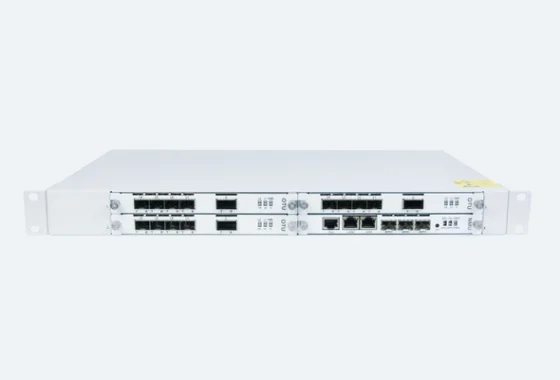- This topic is empty.
-
AuthorPosts
-
07/06/2024 at 22:55 #79408
The rapid growth of data traffic and the increasing demand for high-speed Internet and broadband services have driven significant advances in optical communication technology. One notable innovation is the 2.5G coarse wavelength division multiplexing (CWDM) transponder. These transponders are essential for increasing network capacity, efficiency, and flexibility. This article WDMLight explores the cutting-edge applications of 2.5G CWDM transponders, highlighting their critical role in modern optical networks.
What is a 2.5G CWDM Transponder?

A 2.5G CWDM transponder is a device that converts an optical signal from one wavelength in the CWDM spectrum to another wavelength, which is typically 1270 nm to 1610 nm. They operate at a data rate of 2.5 Gbps and are suitable for a variety of high-speed data transmission applications. The main function of a 2.5G CWDM transponder is to efficiently utilize existing fiber infrastructure by multiplexing multiple data channels onto a single fiber, thereby increasing the total capacity without deploying additional fiber.
Cutting-edge Applications of 2.5G CWDM Transponders
Metropolitan Area Networks (MANs)
Metropolitan Area Networks (MANs) benefit greatly from deploying 2.5G CWDM transponders. These networks cover a city or a large campus and require robust and reliable high-speed data transmission capabilities. By leveraging 2.5G CWDM transponders, MANs can achieve higher data throughput and better network performance without requiring large-scale fiber infrastructure upgrades.
Data Centers
In data center environments, efficient, high-capacity data transmission is critical. 2.5G CWDM transponders enable data centers to optimize fiber usage, connect different data center locations, and ensure seamless data flow. This optimization is essential to support the large amounts of data processed and stored in modern data centers.
Broadband Access Networks
Broadband access networks, including fiber-to-the-home (FTTH) and fiber-to-the-building (FTTB) deployments, leverage 2.5G CWDM transponders to deliver high-speed Internet services to end users. These transponders help aggregate multiple data streams, ensuring that users get reliable and fast Internet connections. This capability is critical to meeting the growing consumer demand for high-bandwidth applications.
Mobile Backhaul
The proliferation of mobile devices and the expansion of 5G networks have fueled the need for efficient mobile backhaul solutions. 2.5G CWDM transponders play a vital role in mobile backhaul, providing the bandwidth required to transfer data from base stations to the core network. Their ability to handle high data rates and support long-distance transmission makes them ideal for this application.
Enterprise Networks
Large enterprises require robust and scalable network solutions to support their extensive communication and data transmission needs. 2.5G CWDM transponders enable enterprises to create high-capacity and flexible networks that adapt to changing business needs. These transponders facilitate seamless communication between different office locations, data centers, and cloud services, ensuring efficient and reliable network performance.
Disaster Recovery and Business Continuity
Maintaining uninterrupted communication and data access is critical in disaster recovery and business continuity planning. 2.5G CWDM transponders provide a reliable solution for creating redundant and resilient network links. By ensuring that data can be transmitted over multiple wavelengths, these transponders help organizations quickly resume operations and minimize downtime in the event of a network failure.
2.5G CWDM transponders are an integral part of modern optical networks, providing high-speed data transmission, cost-effectiveness, scalability, and flexibility. Their applications cover a variety of areas, including metropolitan area networks, data centers, broadband access networks, mobile backhaul, enterprise networks, and disaster recovery. As technological advances continue to shape the future of optical communications, 2.5G CWDM transponders will play a key role in unleashing the full potential of next-generation networks. By adopting these cutting-edge transponders, network operators can achieve higher performance, reliability, and efficiency to meet the growing demands of the digital age.
https://www.wdmlight.com/25G-Transponder.html
Leah
sales@WDMLight.com -
AuthorPosts
- You must be logged in to reply to this topic.


